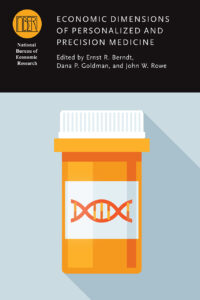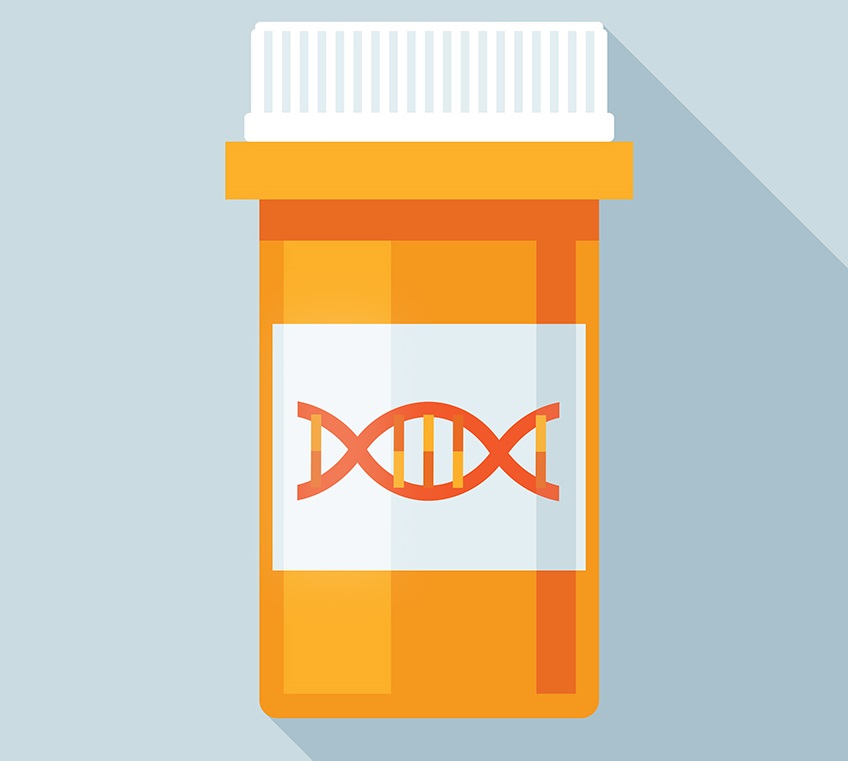
In a new book edited by Ernst Berndt, Dana Goldman and John Rowe, leading economists and thought leaders explore recent empirical applications of personalized and precision medicine (PPM) as well as the intersection of the scientific, clinical, and economic factors affecting the development of PPM, including its effects on the drug pipeline, on reimbursement of PPM diagnostics and treatments, and on funding of the requisite underlying research.
Goldman, Rowe, and Berndt write the introductory chapter to the book, which also includes chapters authored by Tomas Philipson, Amitabh Chandra, Mark Trusheim and others. The work grew out of a workshop on the clinical and social dimensions of precision medicine that was organized by Columbia University Precision Medicine program and the USC Schaeffer Center for Health Policy & Economics.
PPM is the targeting of therapies according to an individual’s biological, genetic, or clinical characteristics. Fully realizing this potential will depend not only on treatment and diagnostic innovations, but also reconsidering economic incentives throughout the healthcare system.
Traditionally, an economic evaluation of pharmaceuticals has been conducted similarly to the way one approaches evidence-based practice for medicine – through a cost-effectiveness analysis whereby one treatment is compared to another along costs and benefits and the treatment with the better ratio of costs to benefits is identified as higher value.
But, people respond differently to different medications. PPM matches patient sub-populations via clinical biomarkers, diagnostics, blood tests and other molecular or imaging approaches. It is targeted, tailored, stratified medicine.
“The value of PPM arises not just because of its direct effect on a patient’s health, but through the information it provides on a patient’s likely response to a particular therapy,” write Goldman and Rowe. Goldman expanded on this thought in a recent talk about the book, saying, “We should not be embarking on personalized medicine with the assumption being that we are going to save money because we are going to eliminate waste. The real value is in its ability to have secondary prevention and the potential to reduce the incidence of disease.”
Economics 101: Experience vs Search Goods
Experience goods are goods whose quality can only be determined through consumption. For example, wine or a new restaurant is hard to judge without first trying a glass or having a meal.
Search goods are goods whose quality can be substantially evaluated before consumption. For example, clothing or computers can be researched and evaluated based on the consumer’s criteria before the purchase.
In health economics, traditional medicine can be mapped to experience goods and precision medicine to search goods.
The traditional approach is problematic when the cost of searching and learning from the reaction to the medicine is high. For example, side effects may make patients non-adherent to a drug or the need for immediate therapy makes trial and error of different treatments too costly.
“One of the big benefits is that for under-treated or untreated populations, we actually will bring them in and be able to do more,” said Goldman. “There is enormous value if someone could develop diagnostics to figure out which patient should get which drug.”
New Economic Incentives
PPM and new diagnostics come with cost issues given our current reimbursement strategy. Currently, the manufacturer doesn’t have strong incentives to develop diagnostics. This is because diagnostics do not have the same intellectual property protections as traditional medicines and manufacturers are paid based on the number of people who take their therapy, whether the patient responds or not.
“We have heterogeneous patients but we don’t have heterogeneous pricing,” explained Goldman. In the current framework, payers make product-specific decisions but treatment is patient specific. With the development of diagnostics, it will allow us to identify patient specific factors but payment reform will have to account for this.
Chapters in the book provide a broad view of the promises of PPM and the importance of viewing PPM through an economic lens. Topics discussed include:
- How PPM fits into the broader trends in medicine
- The challenges of translating basic science to therapeutic innovation
- The costs and benefits of genetic testing for a particular disease
- How game theory can be used to frame the trade-offs inherent in the targeted treatment model
- The drug-development pipeline for precision medicines
- How cost sharing and insurance coverage should work for PPM
- Measuring the potential health impact of personalized medicine
- How imperfect information affect treatment uptake and physicians’ financial incentives
- Whether the high cost of PPM could exacerbate income-related health disparities
More on the book, including purchasing information, can be found through the National Bureau of Economic Research or the University of Chicago Press.

You must be logged in to post a comment.